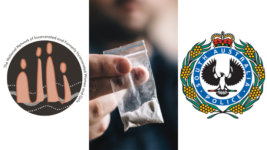South Australia’s Plan to Seize the Assets of Low-Level Drug Offenders is Counterproductive

As other jurisdictions both in Australia and abroad are seeing the sense in drug law reform, with interventions like pill testing trials in multiple Australian states and territories, the South Australian government has come to the conclusion that the best way to address the issue of illicit drug use is via the seizure of drug dealers’ assets, and according to critics, it’s not likely high-level actors will be targeted, but rather the low hanging fruit, like street dealers.
The Malinauskas government’s Criminal Assets Confiscation (Review Recommendations) Amendment Bill 2025 was passed on 23 April 2025, and it’s the second piece of legislation based on a statutorily required review of the prescribed drug offender provisions within the Criminal Assets Confiscation Act 2005 (CAC Act), along with suggestions made directly by South Australian police.
During his 6 February 2025 second reading speech, SA attorney general Kyam Maher explained that the reforms are all about bringing the process relating to the seized assets of drug offenders into line with how the seized assets of nondrug offenders are dealt with, which is required because these days his state is seizing more assets belonging to drug offenders than any other type of lawbreaker.
A more thorough rundown of the implications of the new laws provided by the National Network of Incarcerated and Formerly Incarcerated Women and Girls lists the erosion of the presumption of innocence, lowering the threshold for drug prosecutions, targeting low-level offenders, gifting more powers to police and the continued reliance on punitive measures over harm reduction.
“This legislation reeks of recycled policy from Queensland in the 80s, when the government sold the public a story about cracking down on organised crime,” recalled the National Network’s Debbie Kilroy. “But in reality, all they did was sweep up people who use drugs, trapping them in the criminal legal system and sentencing them to life imprisonment.”
The guts of the reform bill
Criminal asset confiscation laws actually turn a tidy sum for the state, and now that SA warehouses are filling up with the seized assets of drug offenders, “whether that’s money, cars, houses or other assets”, the authorities consider that the process should be streamlined, and after the funds are divvied up with other jurisdictions involved, SA’s share is to go to the Justice Rehabilitation Fund.
Section 6A of the CAC Act, defines a “prescribed drug offender” as someone convicted of a serious drug offence, supply, manufacture or cultivation of a commercial supply of an illegal drug or a precursor, or someone who’s been convicted of two prescribed drug offences in the past, along with the current offence all being committed in the last 10 years, or dealing to a child or in a school zone.
After an individual is convicted in this manner, a court can issue a forfeiture order to seize all property owned by them. New section 56AB provides that in terms of any property captured by an order an individual then has 14 days to provide names and contact details of anyone who might have an interest in it or other such information, and failure to do so carries up to 6 months gaol time.
The seizure process also involves a court issuing a restraining order over specified assets, which must not be disposed of, following an individual being charged with a serious drug offence or it’s proposed that they will be charged as there’s reasonable suspicion, and new section 130A provides them with again 14 days to provide names and contact details regarding the property or face 6 months inside.
Section 186 of the CAC Act has been amended so that the authorities have 60 days, rather than the earlier 25 days, to return property seized as a result of a search warrant that is not the subject of a forfeiture order or a restraining order.
Reading between the clauses
The National Network’s Tabitha Lean points out that in terms of the restraining order provisions, the Malinauskas government’s confiscation regime permits the seizure of property prior to conviction, which is a clear attack on the principle of innocent until proven guilty, and the new provisions now require these individuals to prove that their seized property is not “tainted”, which is no minor feat.
Kilroy further points to the unchecked powers that SAPOL officers now possess “to freeze, surveil and seize assets with minimal oversight”, which “raises serious questions about accountability and proportionality”, and she asserts that Aboriginal communities in SA are already subject to overpolicing and overincarceration and these changes will escalate this “structural violence”.
Despite the SA government using language regarding organised crime when spruiking these changes, the lawyer added that these types of laws “don’t touch the top of the chain”, as they just target “low-income, street-level and survival-based offending”, as “people who use or sell drugs often do so under conditions of poverty, trauma or coercion”, rather than any “sophisticated criminal enterprise”.
The war on drugs is a failure
Another key point to the tough-on-drug-crime agenda is that certain drugs were made illegal a century ago, by international forums, usually given a push by the puritanical US that also tried to ban alcohol, and they were enacted on the idea that drugs cause harms and prohibition would eradicate them. The excessive policing of drugs, or the war on drugs, was then launched by the US in 1971.
In its first report on prohibition published in 2011, The Global Commission on Drug Policy declared “the global war on drugs has failed”, as it’s resulted in increased drug use, more dangerous drugs, mass incarceration, violations of the rights of people who use drugs and “the growth of a huge criminal black market”. The commission consists of former heads of state and global intellectuals.
The entire edifice of drug prohibition laws was initially legislated around this idea of protecting the public from certain substances, but according to the Malinauskas government, stripping drug offenders of their assets when they’re likely already going to prison is supposedly going to prevent further drug overdoses.
“There is no evidence that seizing property or increasing penalties deters drug use or organised crime,” Lean underscored. “What works are community-based, trauma-informed, health-oriented responses – not more prisons, more police, and more surveillance. But once again, this government chooses punishment over prevention, control over care and optics over outcomes.”
Asset seizure laws have also been misused in a manner which has seen property seized from individuals who had nothing to do with another family member’s crimes, or police have used them to hinder lawbreakers, as seen when in early 2022, NSW police seized an activist’s station wagon that they were living in, as she’d was on a community correction order in relation to protesting.
Ensuring maximum time in prison
“Other reforms to the state’s controlled substances laws have also recently passed parliament,” the SA government said on announcing its new laws. “These reforms clarify that the prosecution does not need to establish that the accused knew or was reckless with respect to the particular identity or quantity of a controlled substance for drug offences and attempted drug offences.”
The laws the press release is referring to were contained in the Controlled Substances (Pure Amounts) Amendment Bill 2022.
Prior to the passing of the bill, individuals charged with being in possession of an illicit substance would be prosecuted in terms of the pure weight of the drug seized, so if a quantity of cocaine was cut with 75 percent baby power, the individual would be prosecuted in terms of the weight of the 25 percent pure cocaine.
According to the SA government, this reform was made in relation to a then recent SA Supreme Court case involving a quantity of a new psychoactive substance (NPS) that involved impurities due to the manufacturing process, and the state then explained that due to the difficulties in weighing the purity of NPS, as opposed to heroin back in the good old days, it was a necessary change.
However, this law has long stood in NSW, under section 4 of the Drug Misuse and Trafficking Act 1985 (NSW), where it is referred to as the admixture provision.
“These reforms explicitly state that the prosecution does not need to prove that an individual knew the identity or quantity of a substance involved,” Lean continued. “This means that someone can now be prosecuted for a drug offence without any knowledge or intent.”
“In practice, this will sweep up low-level actors, people coerced into roles within the drug economy, and vulnerable people doing what they can to survive,” the prison abolitionist concluded.
“These reforms will result in the mass incarceration of people who use drugs, they will not be effective in targeting so called organised crime.”







